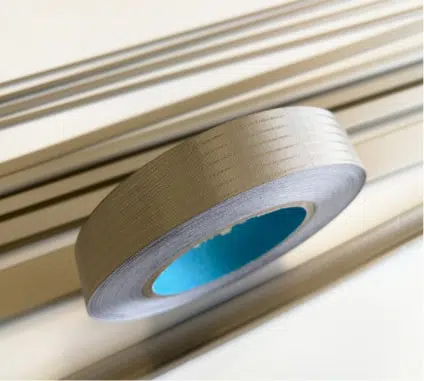 EMI shielding tape is commonly used in various applications, such as electronic enclosures, aircraft, and military equipment, to prevent interference with the operation of sensitive electronic devices.
EMI shielding tape is commonly used in various applications, such as electronic enclosures, aircraft, and military equipment, to prevent interference with the operation of sensitive electronic devices.
There are various factors to think about when selecting EMI shielding tape for a specific application. Some key considerations include the following:
Material: The material of the EMI shielding tape is an essential factor to consider. Some materials used for EMI shielding tape include conductive elastomers, metallic foams, and copper or aluminum foil. The specific material used will depend on the frequency of the electromagnetic waves being blocked, as well as the specific requirements and constraints of the application.
Adhesive: The adhesive used on the EMI shielding tape is also an important factor to consider. The adhesive should be strong enough to hold the tape in place and flexible enough to allow for movement and expansion. The adhesive should also resist environmental factors such as temperature and humidity.
Thickness: The thickness of the EMI shielding tape may also be a factor, depending on the application’s specific requirements. Thicker tapes may provide better shielding performance but may be more challenging to install or require more space.
Conformability: The conformability of the EMI shielding tape is another factor to consider. The tape should be able to conform to the shape and contours of the surface it is applied to provide an effective seal.
Selecting EMI shielding tape for a specific application requires careful consideration of the tape’s material, adhesive, thickness, and conformability, as well as the specific requirements and constraints of the application.
